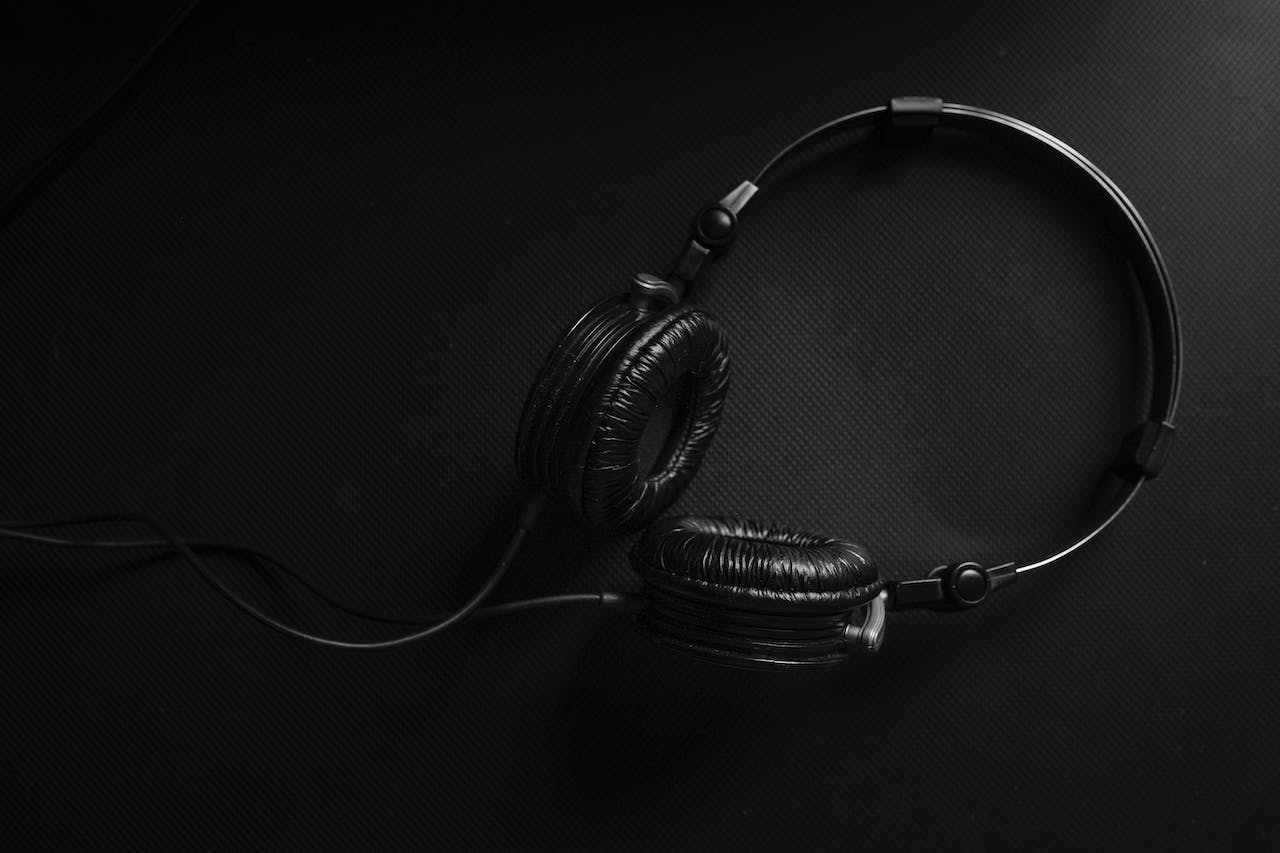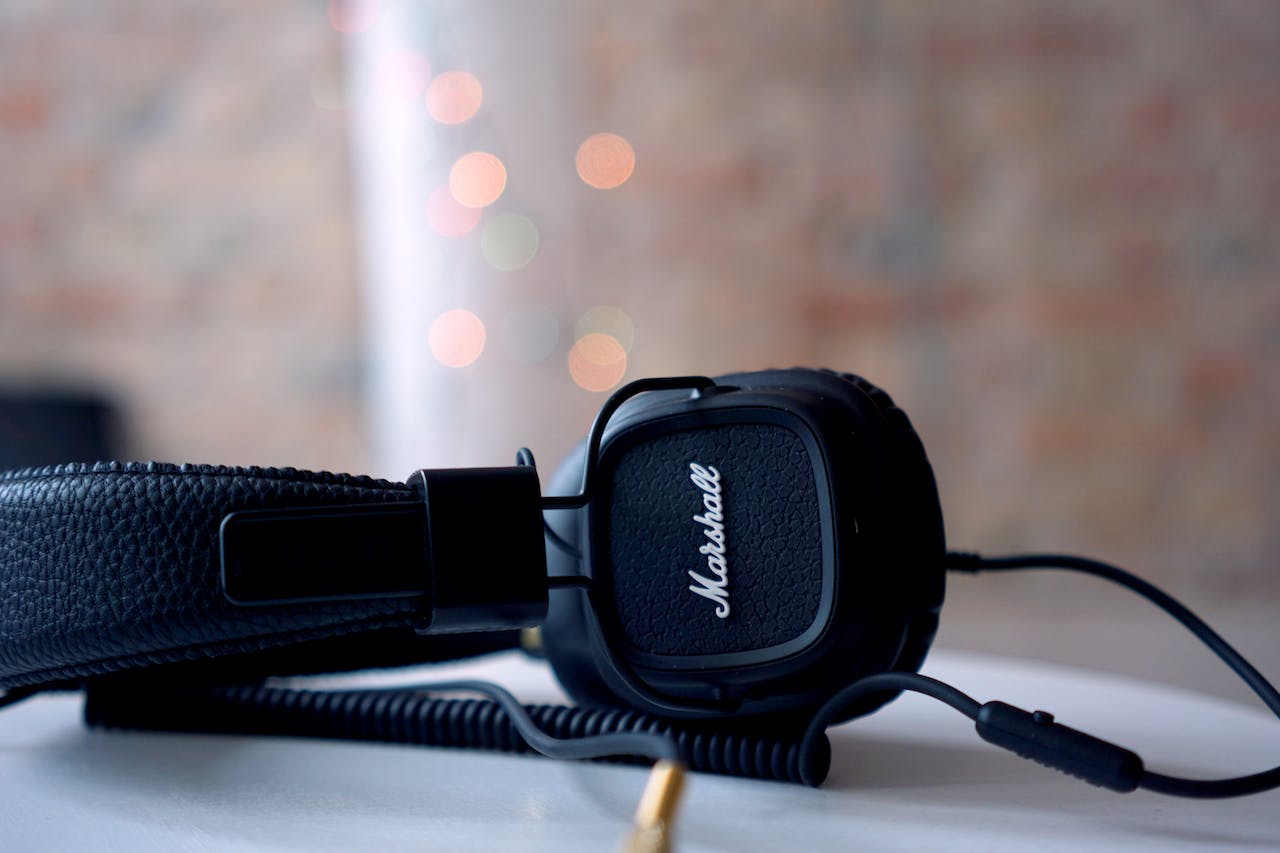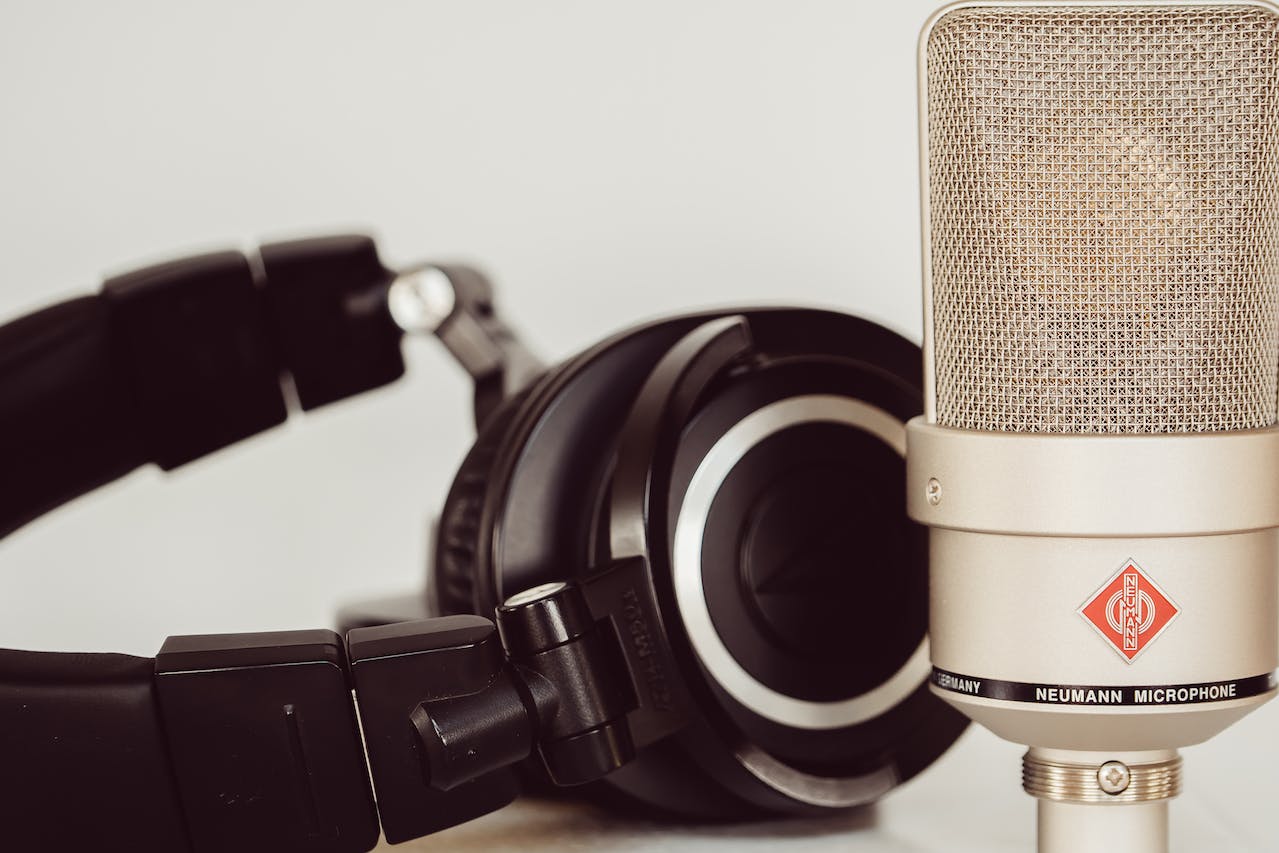Have you ever found yourself caught in the crossfire of the “balanced vs. unbalanced headphones” debate? If you’re a podcast enthusiast, audiophile, or just someone who appreciates good sound, this is a topic you can’t ignore.
In this article, we’ll dive deep into the world of headphones, exploring the nuances of balanced and unbalanced types and helping you make an informed choice. Ready to embark on this sonic journey? Let’s get started!
Related: Best Podcast Headphones
Contents
The Importance Of Sound Quality
Sound quality is the essence of any audio experience. Whether you’re jamming to your favorite tunes, watching a movie, or recording a podcast, the quality of sound can make or break the experience. The audio quality you receive is often influenced by the type of cables used in your setup.
The Role Of Headphones In Audio Experience
Headphones are more than just accessories; they’re gateways to immersive audio experiences. They allow us to escape into our favorite songs, feel the intensity of a movie scene, or focus on a podcast’s message.
The right pair of headphones can elevate these experiences, making them richer and more enjoyable. But how do headphones achieve this? A lot of it boils down to their wiring and the use of audio cables.
Why Understanding Headphone Wiring Matters
The wiring of headphones plays a pivotal role in determining sound quality. It affects how audio signals are transmitted, which in turn influences clarity, depth, and overall sound fidelity. By understanding the difference between balanced and unbalanced cables, you can make choices that align with your audio preferences and needs.
Balanced vs Unbalanced Headphones [Brief Overview]
In the realm of audio, the terms “balanced” and “unbalanced” often pop up, especially when discussing headphones and sound systems. These terms primarily refer to the way audio signals are transmitted through audio cables and connectors. Let’s delve into the intricacies of both to provide a clearer picture.
Unbalanced Headphones
Unbalanced headphones are the most prevalent type in the market. They utilize a simple wiring system, which includes two wires: one that carries the audio signal, known as the signal wire, and another that acts as a ground. The connectors typically used for unbalanced headphones are the familiar 3.5mm or 1/4-inch jacks, which are common unbalanced connections.
Key Features
- Simplicity: With fewer components and a straightforward design, unbalanced headphones are easy to manufacture and use.
- Compatibility: Given their ubiquity, unbalanced headphones are compatible with a vast array of devices, from smartphones to laptops.
- Cost: Generally, these headphones are more affordable due to their simpler design and widespread availability.
Balanced Headphones
Balanced headphones, on the other hand, are a bit more complex. They use a different wiring system that includes multiple conductors to carry audio signals. This design minimizes interference, making them ideal for professional settings where balanced audio sound clarity is paramount.
The connectors for balanced headphones can vary, but XLR and 2.5mm TRRS are common types of balanced headphone connectors.
Key Features
- Reduced Interference: The design inherently rejects external noise and interference, ensuring a cleaner sound, especially over longer cable lengths.
- Improved Sound Quality: Many users report a noticeable improvement in sound quality, with clearer highs and deeper lows.
- Professional Use: Due to their superior sound quality and reduced interference, balanced headphones are often the choice for studio professionals and audiophiles.
Common Misconceptions
The world of audio is rife with myths and misconceptions. When it comes to balanced and unbalanced headphones, several misunderstandings persist. Let’s debunk some of the most common ones.
Misconception 1: Balanced Headphones Always Deliver Superior Sound
While balanced headphones offer certain advantages like reduced interference, it doesn’t automatically mean they’ll sound better in every scenario. The overall sound quality also depends on other factors like the headphone’s drivers, build quality, and the audio source.
Misconception 2: Unbalanced Headphones Are Inferior
Given the hype around balanced headphones, one might assume that unbalanced ones are inherently inferior. However, many high-quality unbalanced headphones deliver exceptional sound. For the average listener, the difference might be negligible.
Misconception 3: Balanced Headphones Are Only For Professionals
While professionals in the music industry often prefer balanced headphones for their clarity, they’re not exclusive to this group. Many audiophiles and enthusiasts also opt for balanced headphones to enhance their listening experience.
Misconception 4: All Devices Support Balanced Output
Just because you have balanced headphones doesn’t mean you’ll get a balanced signal output from any device. Specific devices, like certain high-end music players or professional audio equipment, support balanced output. It’s essential to ensure compatibility before investing.
Misconception 5: Balanced Means More Volume
While balanced headphones can deliver more power, it doesn’t necessarily translate to a higher volume. Instead, it often means better dynamics and a broader soundstage, providing a richer audio experience.
By understanding the realities behind these misconceptions, consumers can make more informed decisions and select headphones that best suit their needs and preferences.
Related: Best Headphone Brands
How Do Headphones Work?
Headphones, at their essence, are marvels of modern engineering. They take the invisible electrical signals from your device and transform them into the tangible music and sounds we hear. But how do they achieve this?
The Science Behind the Sound
Headphones operate on the principle of electromagnetic induction. When an electrical current passes through a wire, it creates a magnetic field around it. This magnetic field can then induce a current in a nearby wire. In headphones, this principle is used to move a diaphragm back and forth, producing sound waves.
The Role of Drivers
At the heart of every headphone is a driver, which is essentially a tiny loudspeaker designed to fit directly into your ear. The driver consists of a diaphragm (usually made of lightweight material like paper, plastic, or metal), voice coils, and a magnet.
When electrical signals from your device reach the voice coils, they interact with the magnet, causing the diaphragm to vibrate. These vibrations produce sound waves that we perceive as music or speech.
Factors Influencing Sound Quality
Several factors determine the sound quality produced by headphones:
- Driver Size: Generally, larger drivers can produce better bass, while smaller drivers are better for higher frequencies.
- Driver Material: The material of the diaphragm can influence sound characteristics. For instance, metal diaphragms might offer clearer sound, while paper ones can provide a warmer tone.
- Headphone Design: Open-back headphones allow some sound to escape and let external sounds in, offering a more natural soundstage. In contrast, closed-back headphones isolate the listener, providing a more direct and immersive experience.
Unbalanced Headphones Explained
Unbalanced headphones are the everyday heroes of the audio world. They’re the ones you find bundled with smartphones or on the shelves of local stores. But what makes them “unbalanced”?
The Wiring System
Unbalanced headphones utilize a two-wire system. One wire carries the audio signal, while the other acts as a ground or return path for the current. The connectors for these headphones are typically the 3.5mm or 1/4-inch jacks we’re all familiar with, which are common unbalanced connections.
Pros And Cons
While unbalanced headphones are widespread and affordable, they come with some inherent challenges:
- Interference: Over longer cable lengths, unbalanced headphones can pick up external electromagnetic interference. This interference can manifest as a hum or buzz in the audio.
- Signal Degradation: Over very long distances, the audio signal can degrade, leading to a loss in sound quality.
However, for most casual listening scenarios, especially over short distances, unbalanced headphones perform admirably and offer excellent value for money.
Balanced Headphones Explained
For those seeking a step up in audio clarity, balanced headphones enter the scene. They’re often the choice of audiophiles and professionals. But what sets them apart?
The Advanced Wiring System
Balanced headphones employ a more complex wiring system. Instead of two wires, they use at least three or more conductors to carry the audio signal. Each channel (left and right) has two wires – one for the positive phase and one for the negative phase.
This configuration allows for noise and interference to be canceled out, as any noise picked up along the cable length is negated by the time it reaches the headphone drivers.
The Benefits
Balanced headphones offer several distinct advantages:
- Reduced Interference: The balanced connection inherently rejects external interference, ensuring a cleaner sound.
- Improved Sound Quality: Many users report clearer sound with better stereo imaging and a broader soundstage.
- Professional Use: Due to their enhanced sound clarity and reduced interference, balanced headphones are often favored in studio settings.
However, it’s essential to note that to truly benefit from balanced headphones; one needs a balanced audio source and often specialized connectors, like XLR or 2.5mm TRRS jacks.
Shared Traits Of Balanced And Unbalanced Headphones
In the vast universe of audio equipment, headphones stand out as personal gateways to soundscapes, be it music, podcasts, or movies. While the market offers a plethora of choices, all headphones, regardless of their type, share certain foundational traits.
These shared characteristics form the bedrock upon which the unique features of different headphone types are built. Let’s explore these commonalities that bridge the gap between balanced and unbalanced headphones.
Fundamental Objective: Bridging The Gap Between Device And Ear
Every headphone, whether balanced or unbalanced, serves a singular purpose: to act as a conduit, channeling audio from a device directly into our ears. This primary function remains consistent, ensuring that listeners are immersed in their chosen audio experience, be it the haunting strains of a violin or the pulsating beats of electronic music.
Anatomy Of Sound Production: The Essential Components
The magic of converting electrical signals into audible sound is a complex process, but it’s achieved through some fundamental components present in all headphones. These components, from drivers to diaphragms, are the unsung heroes, working in harmony to produce the sounds we love.
Design Diversity: A Spectrum Of Styles And Comfort
From the bulky headsets used by air traffic controllers to the sleek earbuds favored by athletes, headphones come in a dizzying array of designs. This diversity ensures that there’s a perfect fit for every ear and every occasion, regardless of the headphone’s internal wiring system.
Universal Connection: The Tether To Our Devices
In an age of wireless technology, the physical connection between headphones and devices remains crucial. Whether it’s the classic 3.5mm jack or the modern USB-C, these connectors ensure that our headphones can tap into a world of audio content.
Quality Spectrum: Catering To Every Budget And Preference
The world of headphones is democratic, offering options for every budget and preference. From budget buys that offer surprisingly good sound quality to high-end models that audiophiles swear by, there’s something for everyone.
Personalization And Adaptability: Crafting A Personal Audio Experience
In a world that values individuality, headphones don’t lag behind. Many models offer a degree of customization, allowing users to tweak their audio experience, ensuring that their journey into sound is as unique as their fingerprint.
Distinguishing Features Of Balanced Vs. Unbalanced Headphones
While the shared traits provide a foundation, the world of headphones is rich and varied, with each type boasting features that set it apart. Balanced and unbalanced headphones, despite their commonalities, have distinct characteristics that cater to different needs and preferences.
These differences can influence everything from sound quality to compatibility with devices. Let’s delve into the nuances that distinguish these two types of headphones.
Wiring Architecture: The Blueprint Of Sound Delivery
The heart and soul of any headphone lie in its wiring. While it might seem like a mere pathway for electrical signals, the design of this wiring plays a pivotal role in sound quality, interference resistance, and overall audio experience.
Battle Against Interference: The Silent War In Our Ears
Every piece of electronic equipment, including headphones, has to contend with interference. However, how headphones are designed to combat this interference can significantly impact the clarity and purity of the sound they deliver.
Auditory Experience: The Personal Journey Of Sound
Sound is a deeply personal experience. What might seem like a rich bass to one person might come across as overwhelming to another. The design and features of headphones play a crucial role in shaping this auditory journey, offering listeners a range of experiences.
Connector Diversity: More Than Just A Plug
In the world of headphones, connectors are more than just plugs. They are the lifelines that link headphones to a universe of sound. The type of connector a headphone employs can influence its compatibility, ease of use, and even sound quality.
Investment Considerations: Balancing Cost And Quality
Choosing headphones is often a balance between cost and quality. While some might be willing to invest in premium models for an unparalleled audio experience, others might seek value for money. Understanding the features and benefits of different headphone types can guide this decision.
Device Compatibility: Ensuring Harmonious Connections
In an age of evolving technology, ensuring that headphones are compatible with devices is crucial. Whether it’s a vintage turntable or the latest smartphone, headphones need to seamlessly integrate, ensuring a smooth and enriching audio experience.
Practical Applications And Use Cases
In the realm of audio, headphones are more than just accessories; they’re tools that cater to specific needs and scenarios. The choice between balanced and unbalanced headphones isn’t merely about sound quality; it’s about understanding where and how they’ll be used.
Let’s explore the practical applications and use cases for both types of headphones to provide a clearer perspective on their roles in our daily lives.
Everyday Listening And Casual Use
For most people, headphones are a daily companion. Whether it’s tuning into a morning podcast during a commute, listening to a favorite playlist while working out, or watching a movie on a tablet, headphones play a pivotal role.
Unbalanced Headphones
- Perfect for short listening sessions where ultra-high fidelity isn’t the primary concern.
- Compatible with a wide range of devices, from smartphones to laptops.
- Typically more portable and easier to store, making them ideal for on-the-go use.
Balanced Headphones
- Offer a richer audio experience, even in shorter sessions.
- Ideal for those who want to immerse themselves fully, even in casual listening scenarios.
- Might require specific devices or adapters, so they’re best for users who prioritize sound quality over convenience.
Professional And Studio Use
In professional settings, sound quality isn’t just a preference; it’s a necessity. Studios, broadcasters, and audio engineers require equipment that delivers precision and clarity.
Unbalanced Headphones
- Often used for basic monitoring or when recording non-critical audio.
- Preferred in scenarios where multiple headphones need to be connected and there’s a budget constraint.
Balanced Headphones
- The go-to choice for critical listening, mixing, and mastering.
- Provide a clearer soundstage, allowing professionals to pick up on nuances and details.
- Essential in environments with multiple electronic devices, as they resist interference effectively.
Audiophiles And Enthusiasts
For audiophiles, headphones are more than just tools; they’re gateways to sonic nirvana. Every beat, note, and nuance matters, making the choice of headphones crucial.
Unbalanced Headphones
- Some high-end unbalanced headphones can rival the quality of mid-tier balanced ones.
- Preferred when the audio source doesn’t support balanced output but still delivers high-quality sound.
Balanced Headphones
- The gold standard for audiophiles seeking the purest sound.
- Deliver unparalleled clarity, depth, and separation, making every listening session an experience.
- Often paired with high-end DACs and amplifiers to extract the best possible sound.
Gaming And Multimedia
In the world of gaming and multimedia, sound can make or break the experience. From pinpointing enemy footsteps in a first-person shooter to feeling the rumble of an explosion in a movie, headphones play a crucial role.
Unbalanced Headphones
- Suitable for casual gaming and standard multimedia consumption.
- Often come with integrated microphones, making them ideal for voice chats and calls.
Balanced Headphones
- Provide an immersive experience, allowing gamers and movie enthusiasts to pick up on subtle audio cues.
- Often used in combination with dedicated sound cards or external DACs to enhance the experience further.
The practical applications and use cases for headphones are vast and varied. Whether you’re a casual listener, a professional, an audiophile, or a gamer, understanding these scenarios can guide you in choosing the perfect pair for your needs.
Conclusion
The debate between balanced and unbalanced headphones is nuanced. Both types have their merits, and the best choice depends on your specific needs, preferences, and budget. By understanding the differences and considering your listening environment, you can make an informed decision.
Whether you’re a casual listener, a professional, or an audiophile, there’s a perfect pair of headphones out there for you.






